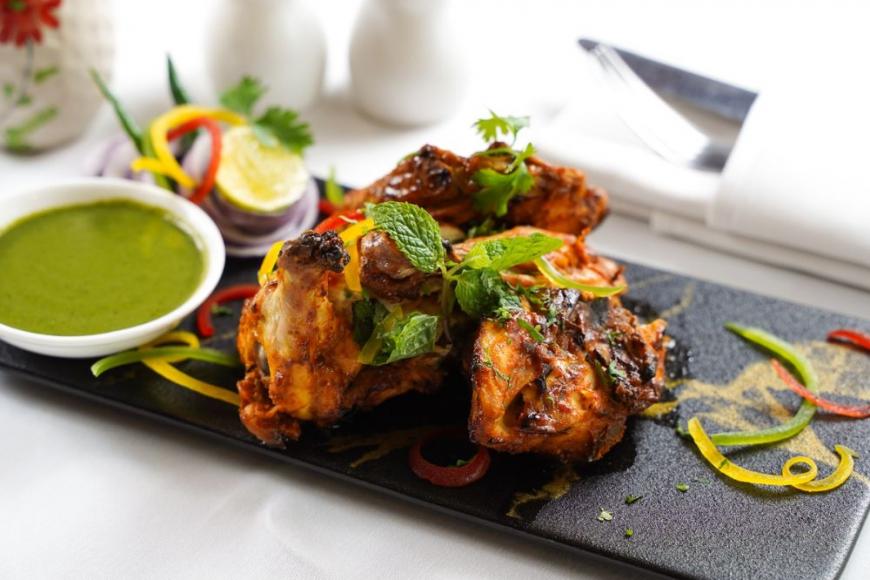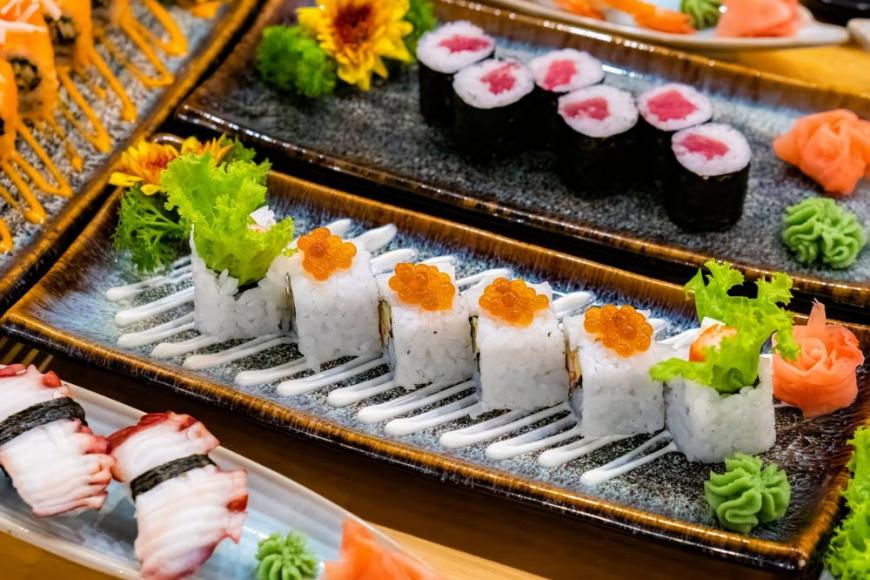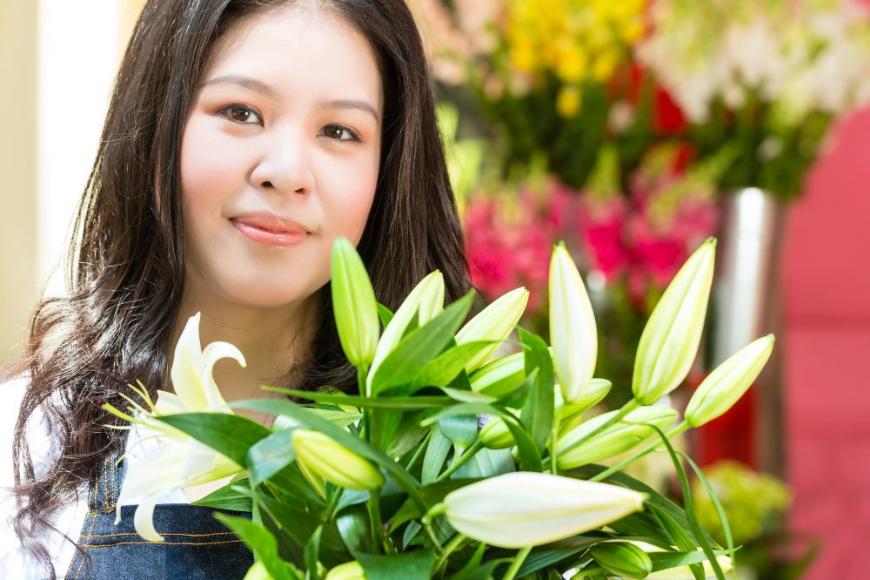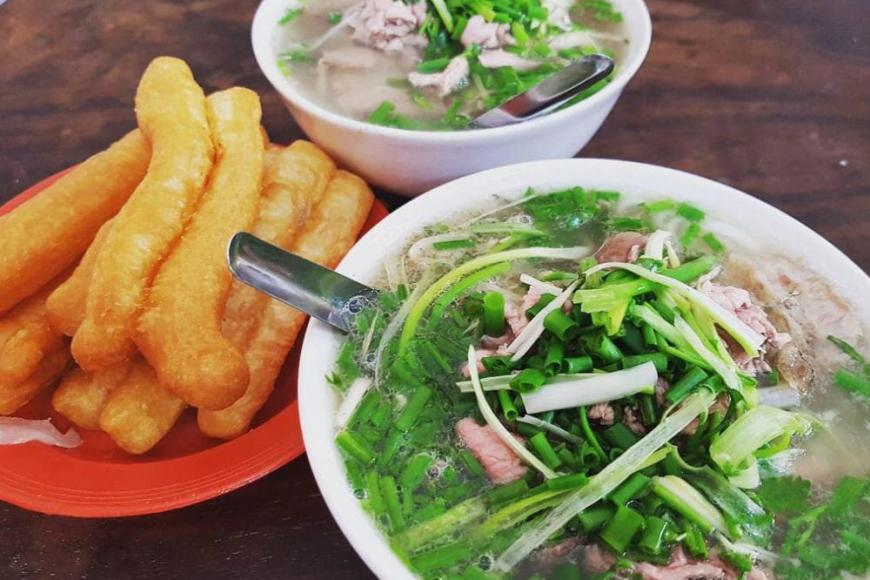- Nha Trang Travel Information
- Muine Travel Information
- Hue Travel information
- Cantho travel information
- Sapa travel information
- Ha Giang Travel Guide
- Ninh Binh Travel Information
- Quy Nhon Travel Information
- Vietnam Travel Information
- Hoian Travel Guide
- Vung Tau Travel Information
- Quang Binh Travel Information
- Phu Quoc Travel Information
- Ha Tinh Information
- Ca Mau information
- Quang Ninh Travel Information
- Tay Ninh Travel information
- Hoian travel guide
- Tien Giang travel guide
- Con Dao Travel information
- Ninh Thuan information
- Moc Chau information
- Danang Vietnam Travel Information
- Hanoi Travel Information
- Ho Chi Minh Travel Information
- Dalat Travel Information
Top 15 Best Vietnamese Fruits You Should Try
When it comes to tourism in Vietnam, Vietnamese fruits have long been a lucrative export as well as an effective feature that attracts a large number of tourists from other countries. If you are going to be in Vietnam, it is just as vital to try some of the local fruits as it is to try Pho, a dish considered to be a Vietnamese speciality. Therefore, to get the most of your trip to Vietnam, let's immediately dive into a paradise of fruits.
Durian (Sầu riêng)
The durian, one of the best Vietnamese Fruits, which is referred to as the "King of Fruits" in many Southeast Asian countries, like Vietnam, is a well-known fruit all over the world due to its distinctive perfume and distinctive flavour.
The durian has a similar appearance to that of jackfruit; however, the spikes on the durian are larger and have the potential to cause skin injuries if you are not careful. When compared to the thick and tough crust, the meat that is contained within has a texture similar to custard, which causes it to melt in your tongue almost instantly. Due to the unique blend of sweetness, saltiness, and creaminess that it possesses, durian is a flavour that is truly unique.
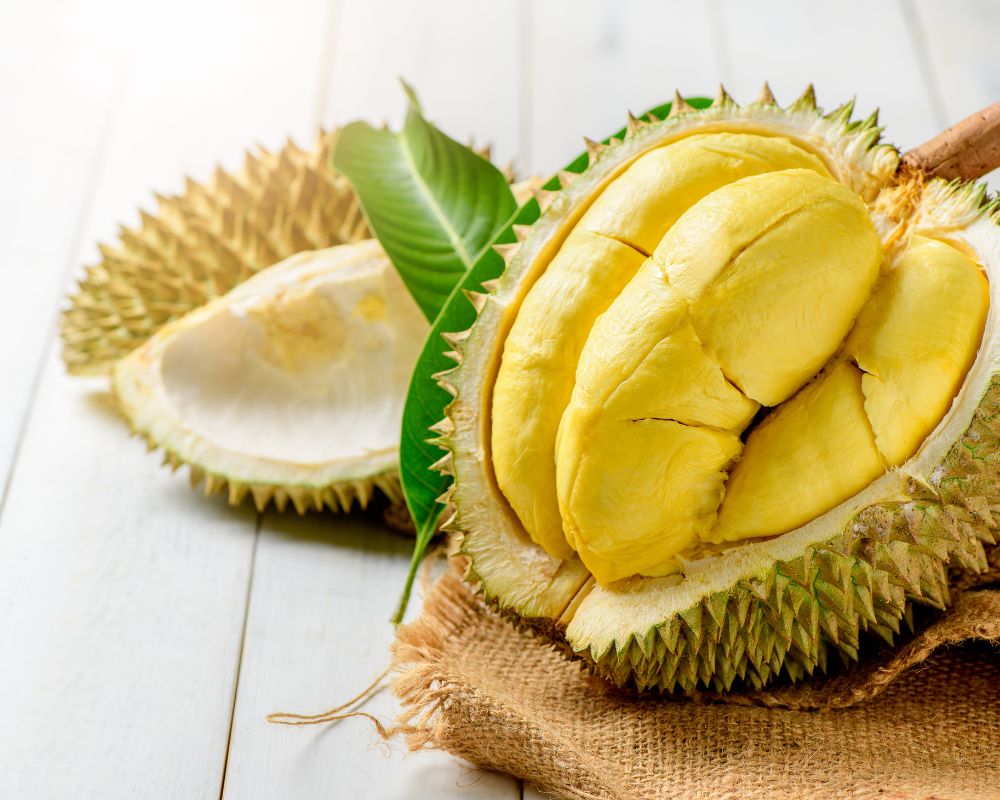
If you want to avoid getting harmed by the spikes on the durian, you should wear gloves and use a sharp knife to cut the crust off of the fruit and remove the yellow pulp so that you can enjoy it.
Lychee (Vải)
The lychee is one of the most popular fruits in Vietnam throughout the summer. The regions of Hai Duong and Bac Giang in Vietnam are well-known not only for their exquisite lychee variety but also for their reputation.
There is a rough red or pinkish-red skin on the lychee, which gives it a lovely circular shape. Its centre is made up of a dense and luscious pulp that sits around a tough seed that is brown in colour. Strawberry and watermelon are said to be the flavours that best represent this product. As a result of the fact that its sweetness and freshness are extremely addicting, lychee is one of the most popular fruits in Vietnam when summer approaches.
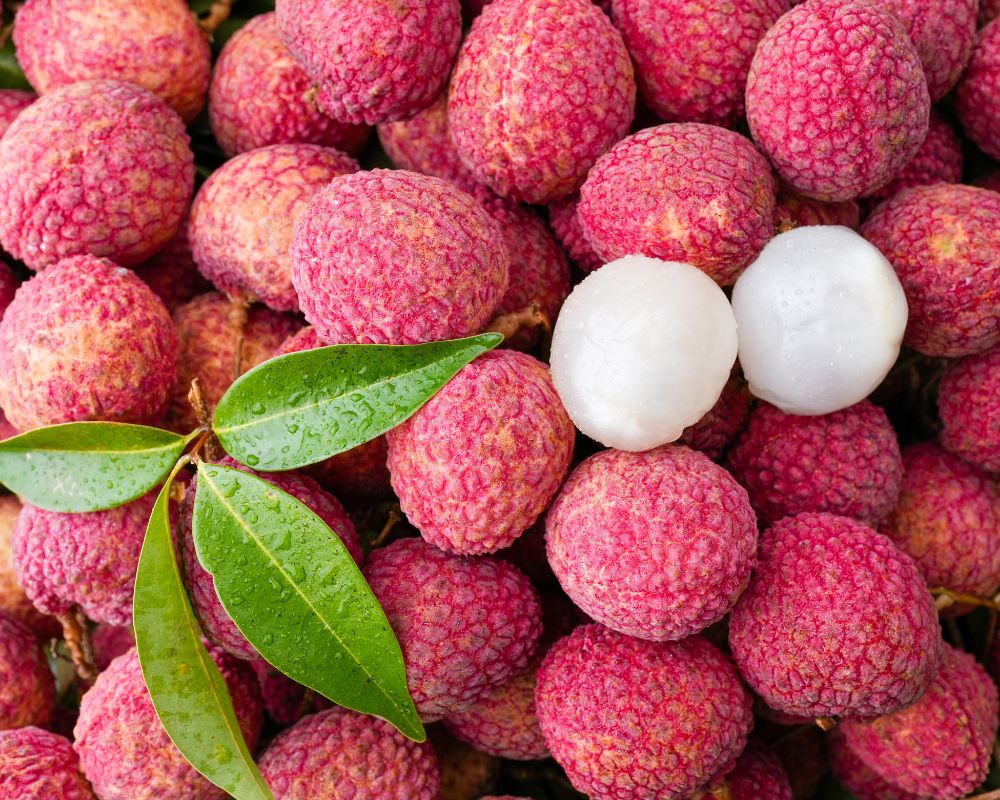
While you are removing the seed, you peel off the outer skin and savour the delicious pulp that may be found inside. Vitamin C, antioxidants, fibre, and other nutrients that are beneficial to your immune system and help prevent cancer are all found in lychee.
Longan (Nhãn)
When we fail to mention Vietnamese longan, we commit a serious shortcoming. Several provinces in Vietnam, including Hung Yen, Can Tho, and Vinh Long, are among those that have seen its presence. It is well-known in a number of tropical countries.
Longan is also referred to as "dragon's eye" in Vietnamese. This is because the seed of the longan is spherical and black, resembling an eyeball, and it is surrounded by tender, translucent pulp. The pulp has a delightfully sweet flavour and a creamy texture, making it an ideal treat to enjoy throughout the warm summer months.
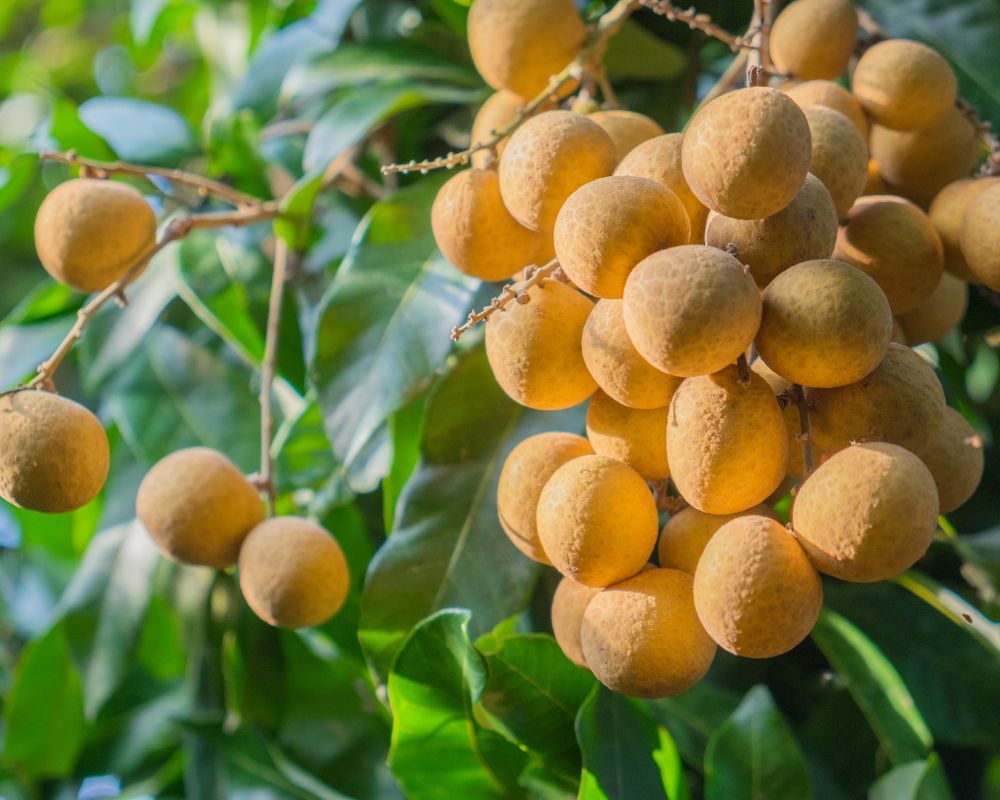
You can view the delicious meat once you peel off the smooth brown cover. Longans are not only delicious, but they are also an excellent source of many nutrients, including calcium, proteins, and vitamins.
Vietnamese Jackfruit (Mít)
Among the Vietnamese fruits that are most widely consumed is the jackfruit. Depending on the size of the fruit, these oblong fruits can reach a length of up to 90 centimetres and weigh between 10 and 20 kilogrammes. Because of its green or yellowish-colored crust that is covered in countless sharp hexagonal spines, jackfruit always presents an outstanding sight whenever it is displayed in fruit stands.
The jackfruit interior is filled with many fleshy yellow bulbs with a sweet flavour, a pleasant aroma, and a texture that is both stringy and crunchy. Additionally, jackfruit is particularly abundant in vitamin C and a variety of other elements that are advantageous for the body as a whole.
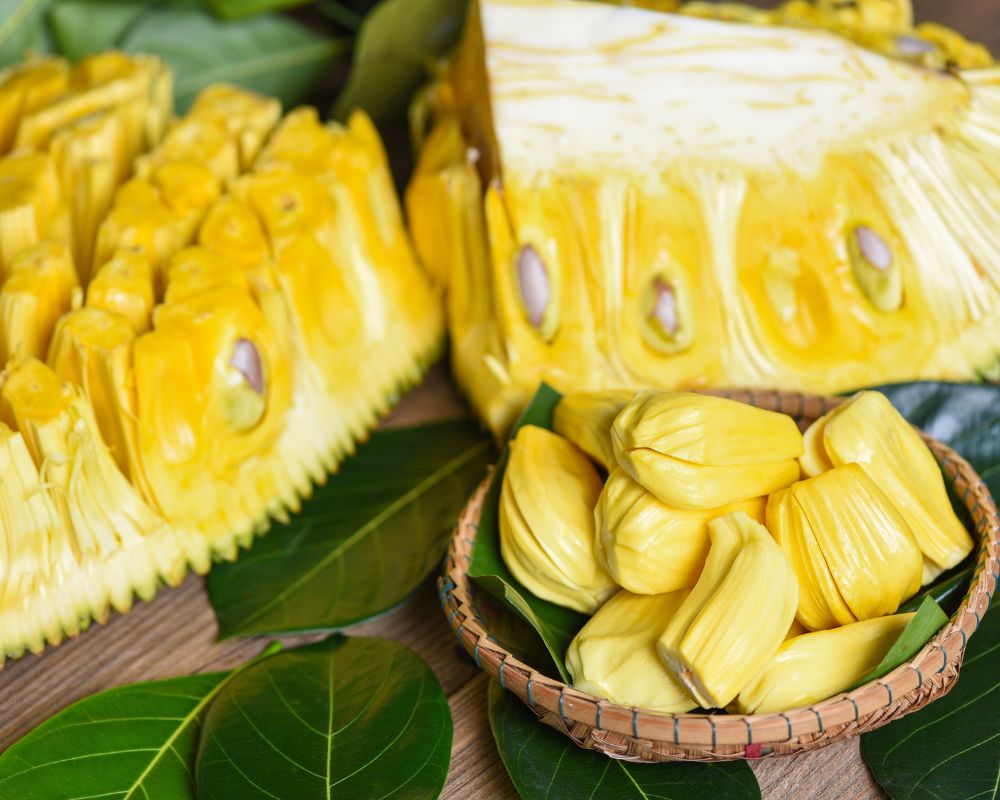
The jackfruit may be the fruit on this list that is the most difficult to open due to its rough skin and sticky latex. Put on some gloves or a cloth to make the process of removing the flesh simpler. Jackfruit can be enjoyed in a variety of ways, including while combining it with other fruits, yoghurt, or coconut cream, among other combinations.
Vietnamese Passion Fruit (Chanh leo)
An integral part of Vietnamese food is this little, spherical fruit that is purple in colour. The interior yellow flesh is quite juicy and contains many edible seeds; it has a little sweet and sour flavour.
Passion fruit is a popular ingredient in many delectable Vietnamese desserts, such as ice cream, juice, cocktails, cakes, and more. Vitamin C, proteins, and carbohydrates abound in it. To extract the juicy meat for use in cooking or drinking, just split the thick rind using a knife.
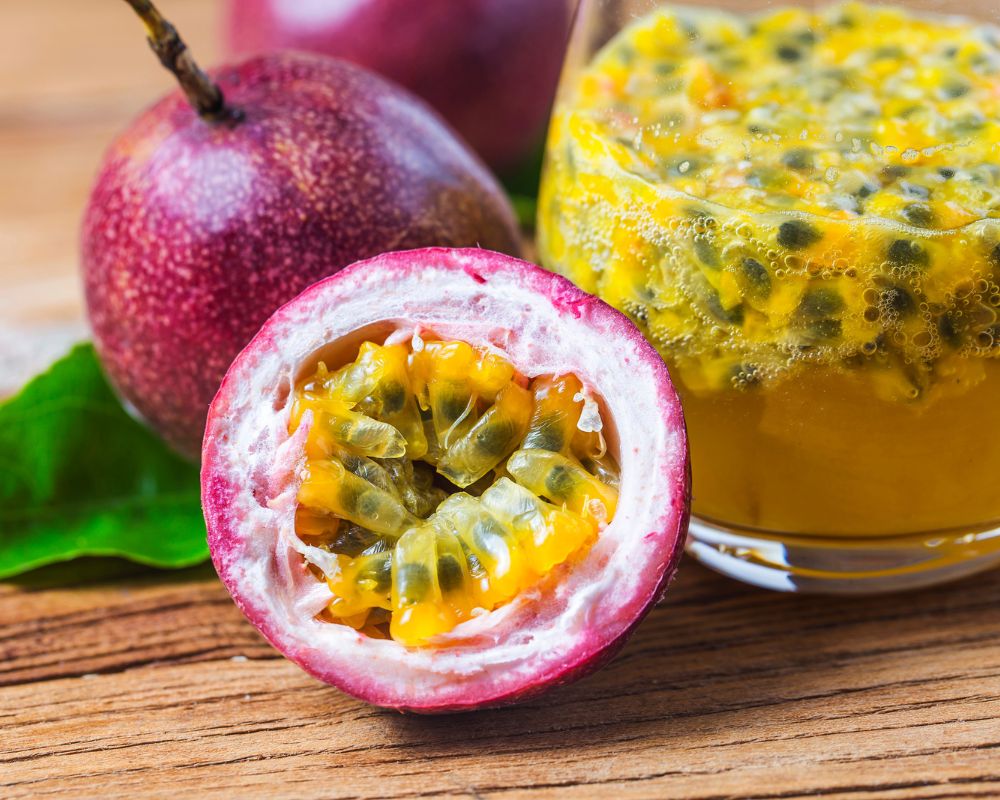
Star Apple (Vú sữa)
The star apple, also known as milk fruit, is a delicious fruit that is cultivated extensively throughout the provinces of the Mekong Delta. This particular fruit is known by its Vietnamese name, meaning "breast milk." This name is associated with an old folktale.
The fruit has a skin that is relatively thin and shiny, and it is either a light green or a purple colour. It is around the size of an orange. The white pulp that is found within features a star design that contains huge seeds that are not edible. Its one-of-a-kind, mild flavour, combined with flesh that is exceptionally juicy and fragrant, will undoubtedly cause your mouth to wet.
A fruit that is rich in calcium and contains vitamins A, C, and B, the Vietnamese star apple is a fruit that is considered to be extremely healthy. Consuming star apples on a daily basis is strongly suggested. In order to prepare the fruit in the manner of a native, simply cut it in half and use a spoon to remove the meat.
Rambutan (Chôm chôm)
When you visit Vietnam, you must try rambutan, one of the Vietnamese fruits that is unique to the country. "Rambut" means "hair" in Malay, the origin of the distinctive name.
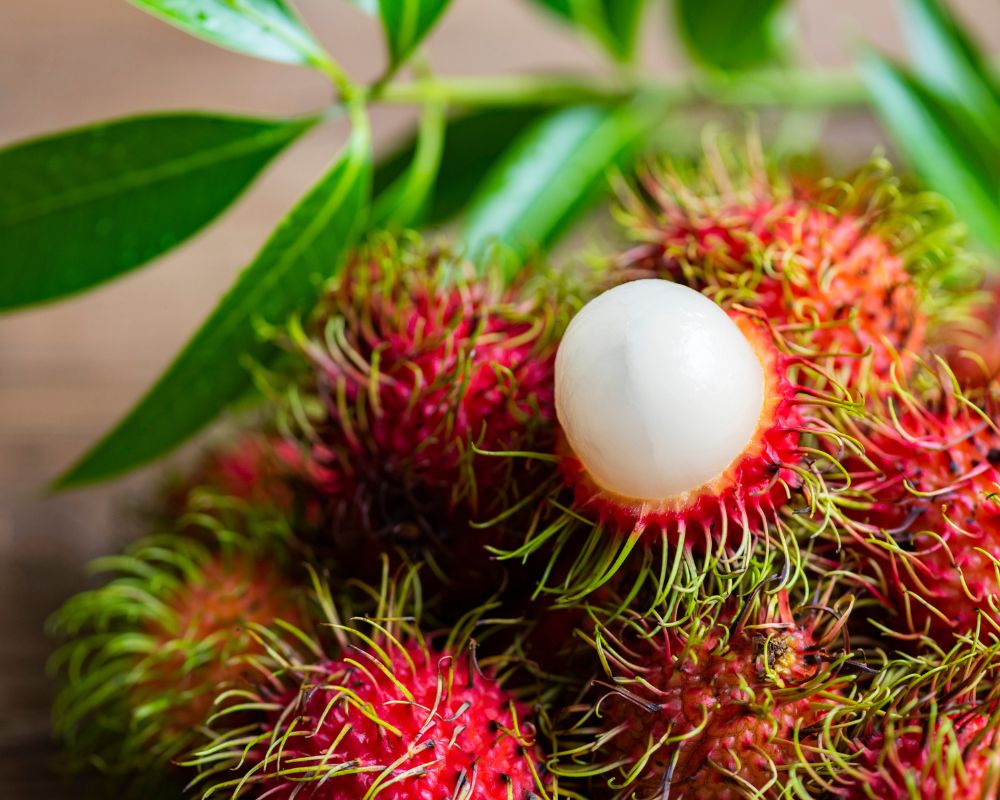
White, translucent flesh with a subtle sweet-sour taste reminiscent of grapes encases their colourful and hairy crust. During the summer, you may find these colourful fruits sold by almost every street vendor or food stand. A knife might be necessary to split the skin in two, remove the seed, and savour the delicious flesh. Rambutan, a plentiful and inexpensive fruit in Vietnamese fruit markets, is high in vitamin C and fibre.
Sapodilla (Hồng xiêm)
There is a very limited availability of this delectable fruit in Western countries; yet, it is a native fruit of Vietnam, particularly in the northern regions. The fruit is shaped like an egg and has a skin that is thin and brownish in colour.
In spite of the fact that it has a somewhat monotonous appearance, the meat is quite tender and sweet, which will undoubtedly fulfil your preferences. It is not possible to consume sapodillas when they are not fully ripe since the flesh is still firm and contains latex.
In order to remove the dust from the sapodilla, you must first wash it with water. After that, you must peel off the skin and cut it into four or six small pieces. Consuming sapodilla on its own or incorporating it into smoothies is completely acceptable.
Vietnamese Dragon Fruit (Thanh long)
It is in the Mekong Delta that you will find this peculiar fruit that is native to Vietnam. Its name originates from the vivid red colour of its skin and the many green scales that are reminiscent of the scales of a dragon. White or crimson flesh can be found inside the Vietnamese dragon fruit, which also has a large number of black seeds that can be consumed.
The fruit has a flavour that is both sweet and sour, making it a wonderful combination of the two flavours. Despite having a low calorie count, it is considered a fruit that is rich in nutrients such as fibre, magnesium, and vitamin C, all of which contribute to the prevention of cancer, premature ageing, and other diseases.
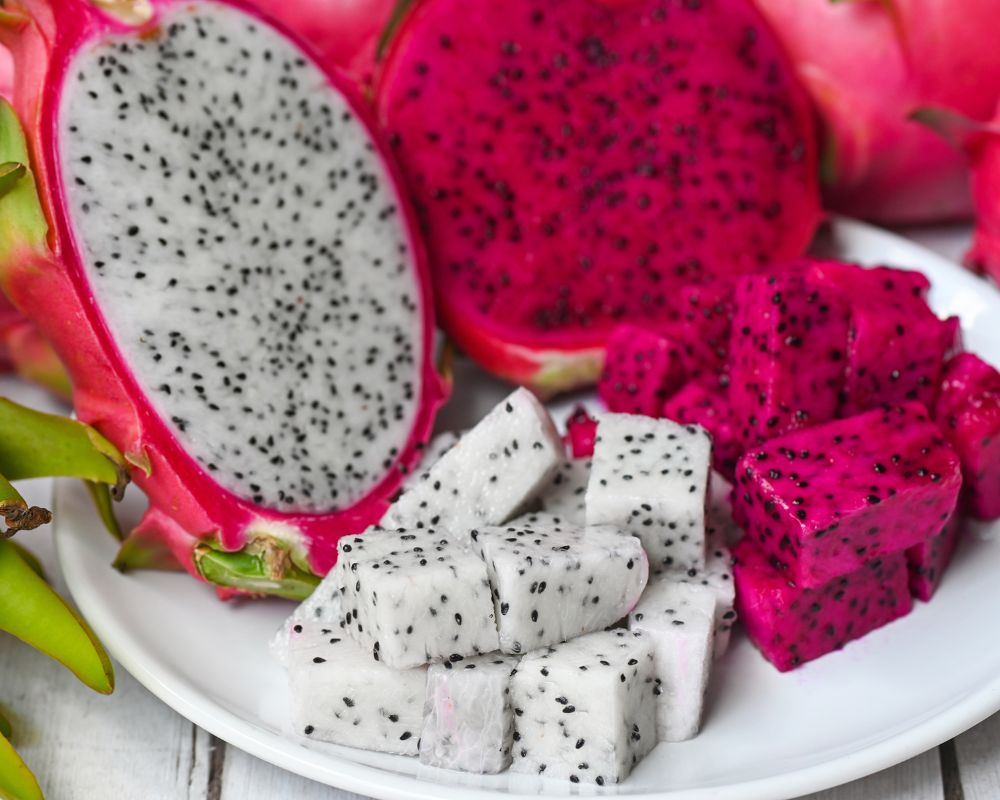
In order to eat dragon fruit, all you need to do is slice it into smaller sections, then peel the skin off of the flesh and savour the mild flavour. The skin of dragon fruit is very delicate and thin. It is a nutritious dessert that is favourite by a large number of Vietnamese people.
Java Apple (Roi)
One of the odd Vietnamese fruits known as a Java apple looks like a bell. Its outer layer resembles watermelons in appearance: it is glossy, red, and smooth.
The combination of its sweet flavor, crunchy texture, and juicy interior makes it impossible to stop munching. The java apple is good for your digestive and immune systems thanks to its nutritional content.
You can either cut it in half to expose the core, which you can then eat around to avoid the seeds, or you may remove the bottom half and eat around it.
Custard Apple (Na)
Vietnamese people also love custard apples. Most of its appearances are in circles or hearts, and it has green skin with surface cracks. The white meat within is occasionally visible when the shells enlarge and the grooves deepen as they ripen.
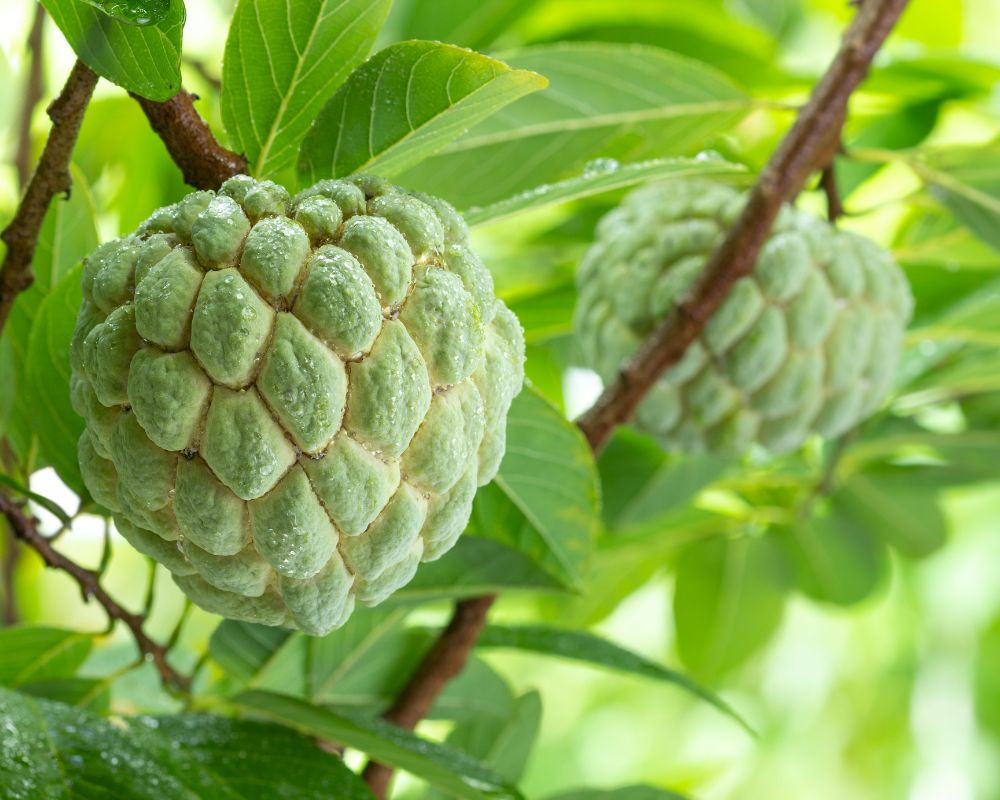
The flesh is really tender and has a subtle sweetness to it. Custard apples are delicious, but you have to be careful to avoid eating the many seeds that are inside the fruit.
Carefully remove the skin and devour the flesh immediately by biting or spooning it. This delicious fruit is also included in the five-fruit tray during the Vietnamese Tet holiday; it is rich in vitamins and protein.
Mangosteen (Măng cụt)
It is only possible to purchase mangosteen in Vietnam during the months of May and August, making it one of the most unusual fruits that can be produced there. Mangosteens, which are characterised by their thick purple peel and tender, acidic flesh, are readily available in stores and from street vendors all around Vietnam.
When the meat is cut into segments, the seeds may or may not be included within them. In addition to being soft and sweet, these pulps also contain a trace of sourness. During the experience of tasting it, you will be completely submerged in the sweetness and tenderness of it.
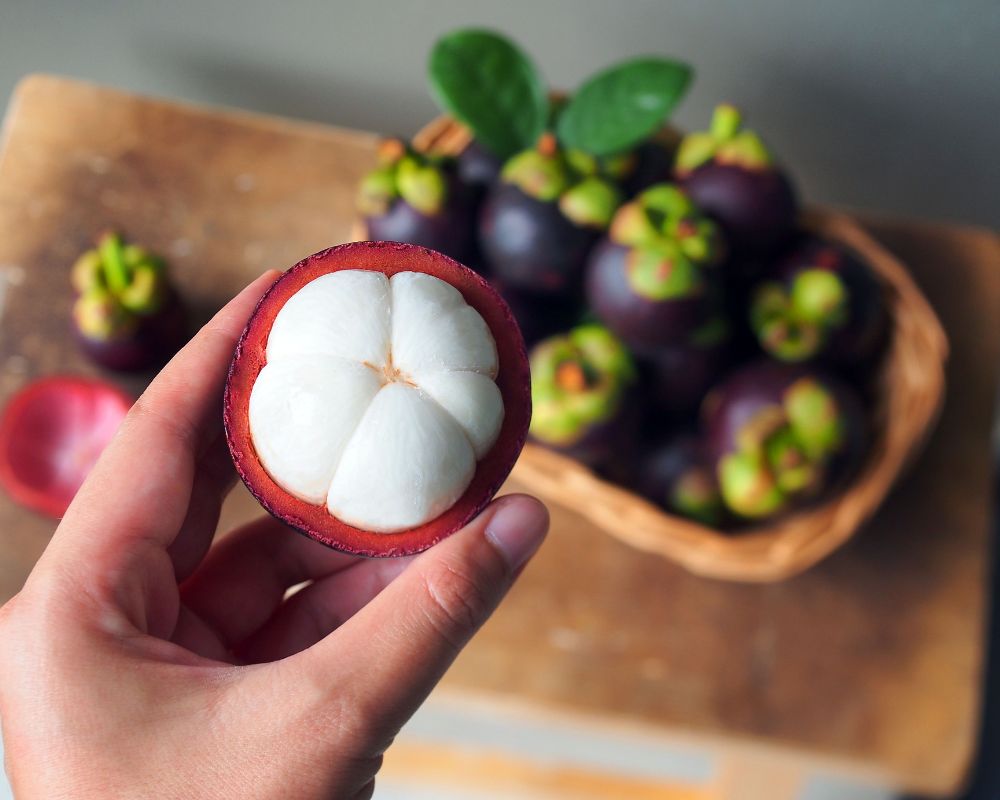
One of the most effective methods is to use a knife to cut the thick rind into pieces, then remove it and allow the flavour to captivate you. When you are eating mangosteen, you need be careful with the seeds.
Soursop (Mãng cầu)
Soursop is a fruit well-known both in Vietnam and abroad for its fragrant and flavorful fruit. Soursops are bigger, more oval in shape, and a darker green in colour than sweetsops, sometimes known as sugar apples.
An alluring aroma reminiscent of pineapple wafts from the white flesh within. Because of its tart and sweet flavour, soursop is commonly used to fresh fruit drinks, smoothies, ice cream, juice, and other desserts. The high mineral and vitamin content of sour sop is good for your health in general.
After a few minutes of thorough rinsing, pat the fruit dry. After that, separate the layer and remove the core and stem. Lastly, before you eat, slice the fruit into little bits.
>>> See more: TOP 15+ BEST DESTINATIONS TO VISIT IN VIETNAM
Ambarella (Quả cóc)
There is a fruit known as ambarella that is common knowledge among Vietnamese people. Additionally, it is an essential component of the cuisine of Vietnam.
On the other hand, the Vietnamese ambarella is shaped like an oval and comes in a cluster. There is a tendency for immature ambarella to have green and problematic skin. At the core is a fibrous pit that can be found. In the process of maturation, the fruit will take on a pale golden hue. Its flesh has a mouthfeel that is both sweet and sour, and it is incredibly crunchy.
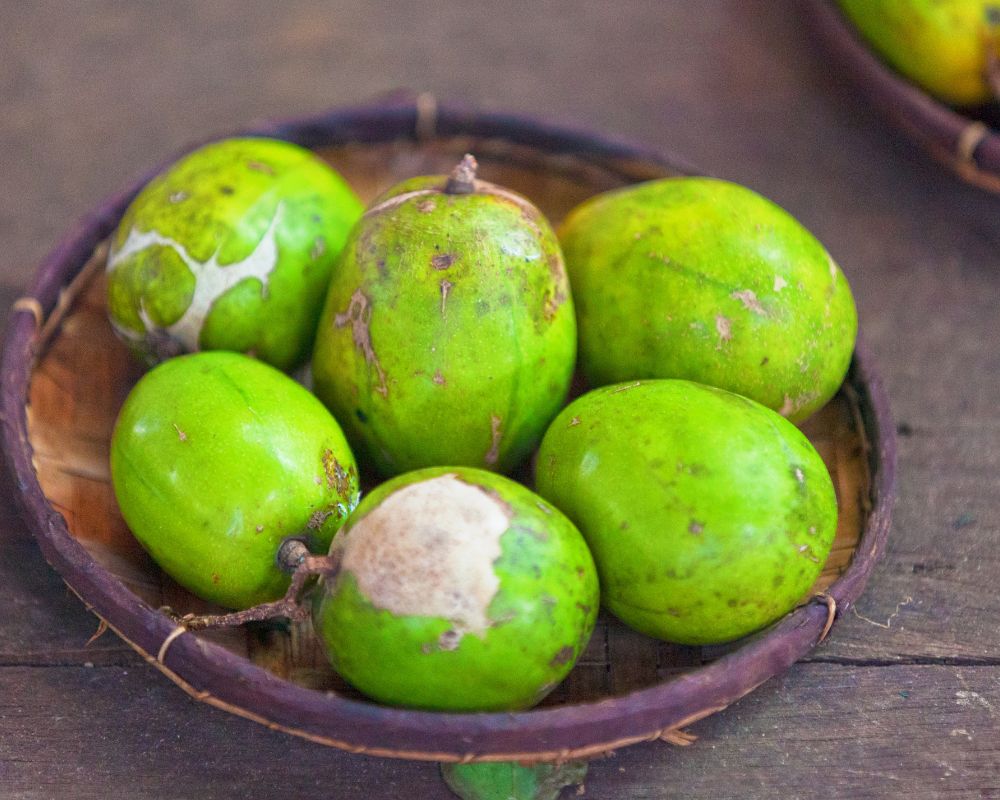
It is necessary to remove the seed, split the skin into pieces, and remove the skin. Consumption of raw ambarellas seasoned with salt and chilli is common among local Vietnamese. In addition to that, it is pickled with salted water and sugar.
The Vietnamese people rely heavily on fruits in their daily lives, and they are an essential part of their culture. In addition to being delicious treats, Vietnamese fruits are essential components of a wide variety of Vietnamese cuisines and bear significant cultural significance. Because of this, now is the time for you to learn about the tropical fruits that are native to Vietnam, and you will undoubtedly fall in love with some of them!
>>> See more: EXPLORE THE BEST PLACES TO VISIT IN VIETNAM DURING TET HOLIDAY
other
Indian cuisines are quite unique and rich, attracting tourists from all over the world to explore and try them. Each Indian food is an ingenious combination of spices and elaborate processing of the Indians. If you don't know what food you should try, find the top 15 Indian dishes in this guide.
Japanese food is one of the traditional diversities of world cuisine with many famous foods. So, do you know about a variety of traditional Japanese foods? This guide will inform you of some traditional Japanese food for you to refer to.
With a history of over 150 years, Binh Thuy ancient house is one of the most stunning old houses in Mekong Delta, attracting many tourists to visit here. Embark a journey to explore Binh Thuy after visiting Cai Rang floating market, Ninh Kieu Wharf, don't pass up this place.
The house has a unique architecture and evaluation collection of artifacts, ensuring to surprise you and learn more about the culture, life of locals.
Vietnamese Women's Day is celebrated on the welcome of Vietnamese women with tribute to uncredible strength, and contribution of them. Many popular activities are held on this day, showing the vital role of women in society. This guide info about Woman's day 20/10 below.
Vietnamese Pho is a famous dish in the world with flavorful broth, chewy noodles and the best flavor. Explore Vietnam during the holidays, don't forget to try it. You will be surprised about Pho in Vietnam.

